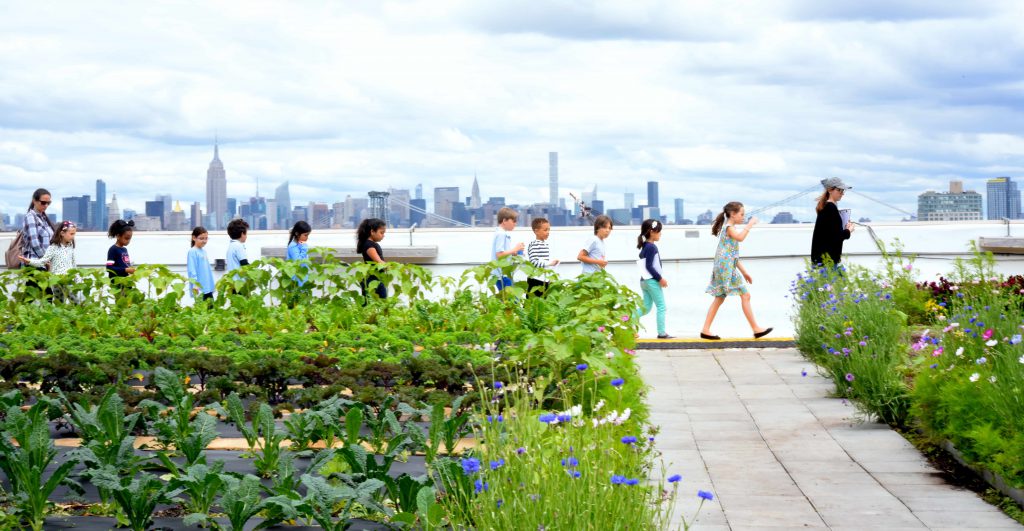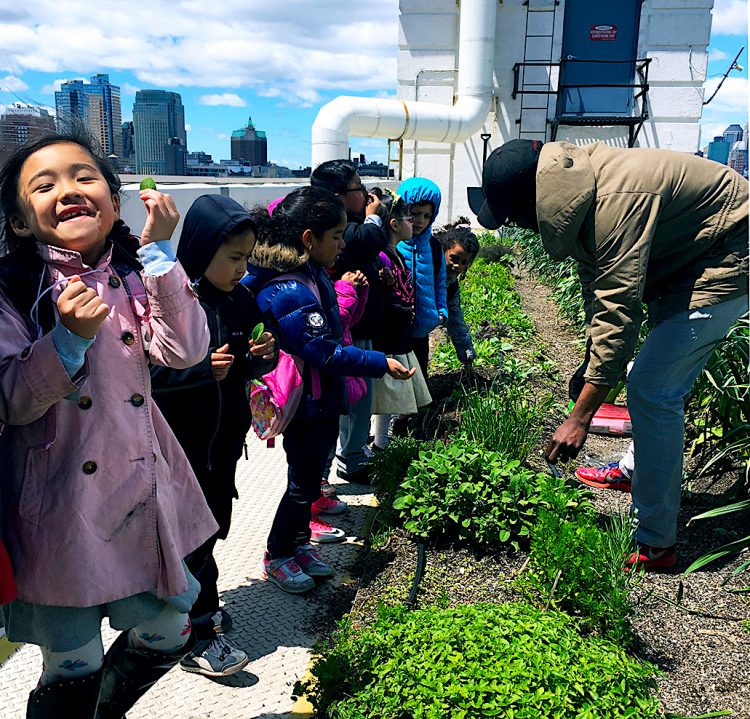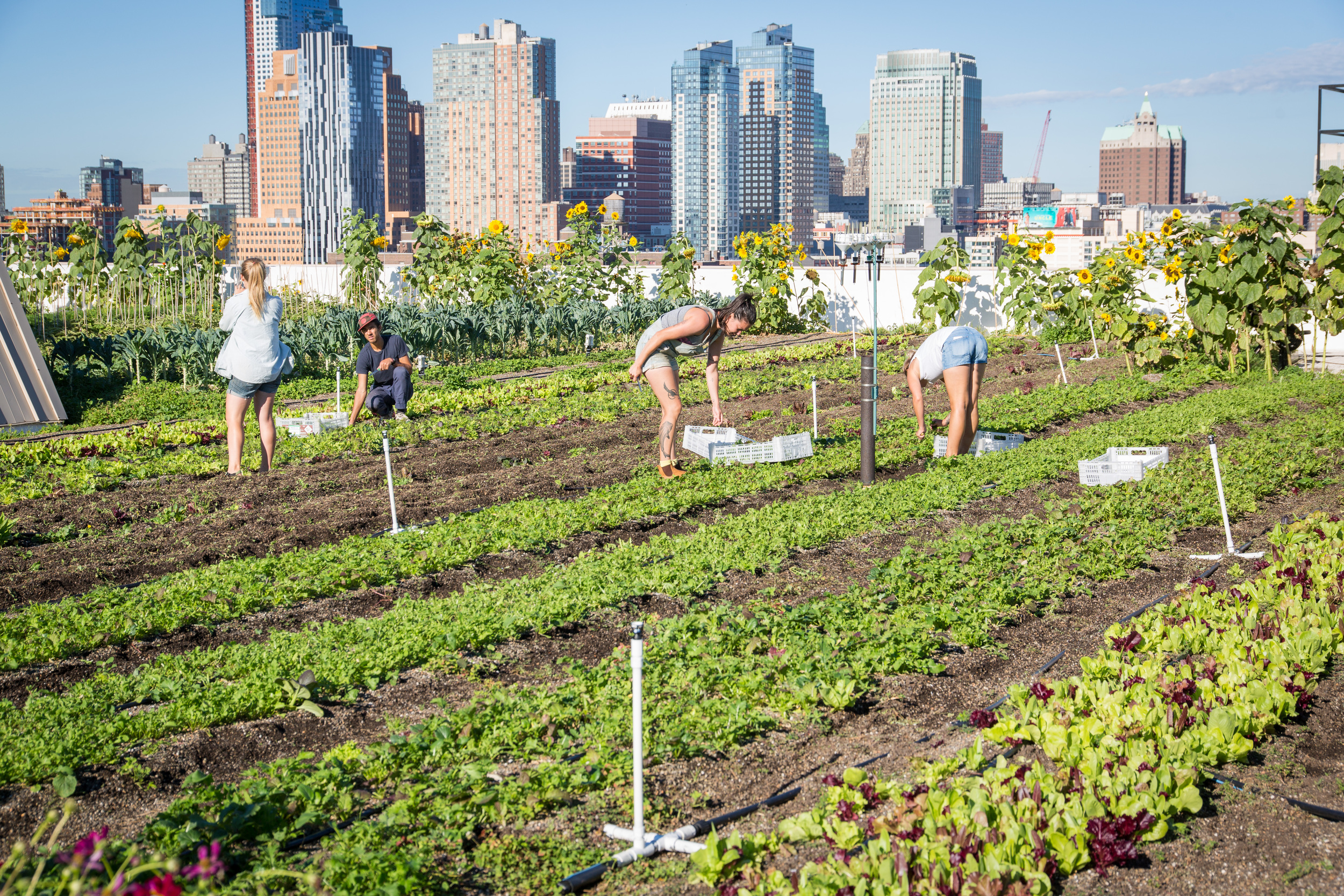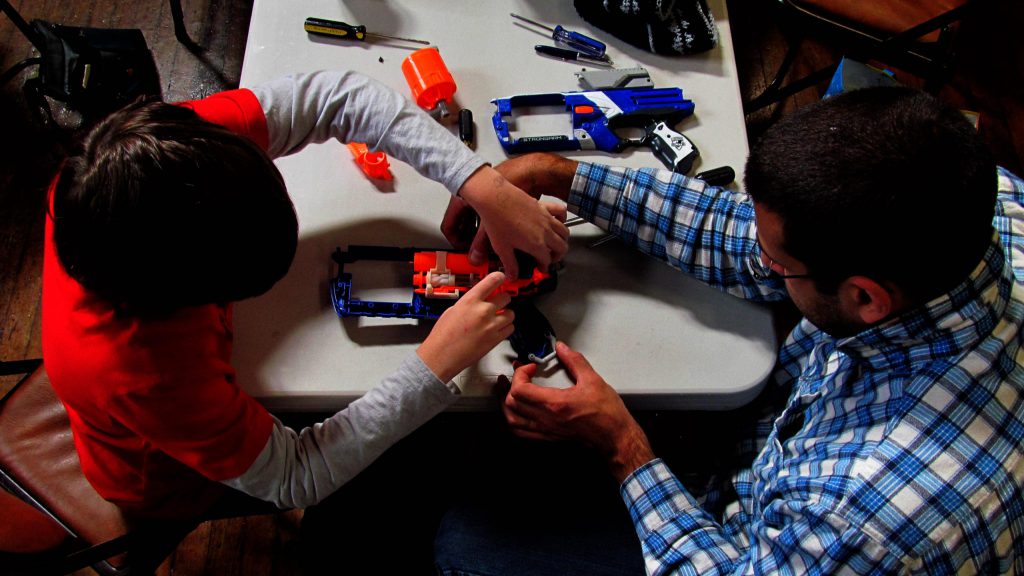In this edition of our Community Climate Champions series highlighting individuals and organizations building a better future for their neighborhoods we focus on Brooklyn-based nonprofit City Growers.
Table of Contents
An Oasis in the City
Last summer on a cloudy day in June, I stood atop an oasis of green space in New York City and the world’s largest soil-based rooftop farm. Standing amidst rows of vegetables and pollinator-friendly flowers, with an impending rainstorm on the way, I looked out to admire the city from the Brooklyn Grange rooftop farm.
While the community of microbial life beneath my feet was promoting fertile and healthy soils, another equally important community was developing at the farm. Founded in 2011, born out of Brooklyn Grange rooftop farm, an educational nonprofit called City Growers emerged.
Through hands-on educational programming centered around food and urban agriculture, City Growers helps young people connect with the environment and understand the importance of healthy, accessible food systems.
In conversation with City Growers’ Executive Director Becca Di Meo and Director of Development and Communications Rebeca Ames, we dove into the dynamics of food access and the critical importance of bringing children closer to their food. What I learned from this discussion is that a seemingly simple introduction to where our food comes from can actually have a profound impact on young people in our communities.

What is Food Access?
In a sustainable and thriving community, every member must be able to meet their basic health needs. This includes guaranteed access to nutritional, affordable food.
Unfortunately, food access remains a pervasive issue across the United States, and its effects are not equally dispersed. According to the USDA, 37.2 million Americans in 2019 did not know where their next meal would come from. Right in New York City, 1 in 8 residents deal with food insecurity, according to Hunger Free America. As City Harvest notes, “With food costs in New York City among the highest in the nation, many working families are forced to choose between paying their rent or buying groceries.”
A disproportionate amount of those who go hungry reside in communities of color, with African American households seeing hunger rates nearly double the national average and Latin American households double that of white households.
These statistics show prevailing racial and socioeconomic structural barriers preventing equal access to a basic human necessity. Our solutions, then, must specifically address the needs of disenfranchised communities.
City Growers is working to shine a light on these systemic barriers and discuss solutions with the young people who will be our leaders one day soon. Over the last several years they have grown their program participation while centering their focus on those who face added barriers to accessing healthy, affordable food, with 67% of participating students from Title 1 schools and 85% of summer camp attendees receiving scholarships.
Director of Development and Communications Rebeca Ames says that this commitment to breaking down barriers is what drew her to the work: “I am constantly thinking about ways to make our activities more accessible, so being able to provide free programming to families is really important.”
Increasing Food Access
Achieving greater access to food is not just a matter of increased convenience (i.e. ever-multiplying cheap fast food chains and sugar-sweetened beverages); it’s about providing choices that are nutritionally valuable, as well.
Policies to improve food access include prioritizing the affordability of healthy fruits and vegetables and developing more markets in marginalized communities. Both ideas touch on the core work City Growers carries out.
The programs facilitated by City Growers are working to increase New York City’s access to food by harnessing young people’s early curiosity and engaging in hands-on activities and growing their own food. Nearly 45,000 youth have travelled to Brooklyn Grange rooftop farm, where they tour a thriving and accessible agricultural ecosystem within New York City. City Growers fosters new skills from beekeeper apprenticeships to educational series on topics like native plant species and the importance of biodiversity. The learning extends all summer long when City Growers’ summer camp introduces children to gardening, cooking, and STEM classes.
Perhaps most inspiring is the Green Ambassador Program, where young people not only learn about food access and cultivation, but develop leadership skills to become educators on these topics themselves. This knowledge sharing instills a sense of confidence in the youth and creates a web of learning and connections within the community.
Food as a Teacher
Whether City Growers is facilitating a cooking class, nutrition education, ecology experiments, or hands-on gardening, students across the city are getting more involved with the land and engaging with their local food-based ecosystems.
Each opportunity created by City Growers equips students with new understandings and capabilities. By growing food and working with the soil, students learn the value of patience and curiosity. In turn, these values empower youth to be active members of their communities.

Executive Director Becca Di Meo says a moment that consistently crystallizes the impact of City Growers’ work comes during each radish harvest. Radishes have a particularly fast germination time–they go from seed to harvest in just 35 days! Becca recalls, “It’s amazing to watch young people’s eyes widen as they pull their first vegetable from the ground. They feel this obvious connection to a living thing which they helped to create.” In this way they have literally reaped the rewards of their hard work in one gentle pull from the soil.
It’s a special moment. I didn’t harvest my first vegetable until my sophomore year of college, but I remember digging out that butternut squash like it was yesterday.
The experience of working with my hands in the soil continues to impact me to this day. I still volunteer every season at that very farm where I pulled my first squash, and it has pushed me to be more curious and engaged with my local food systems.
The young people who participate in City Growers’ programs will carry their experiences with them, too. Their experiences with City Growers excite them to try new things like holding an insect found in the soil, or tasting a fruit they’ve never heard of before. “The first time students try lemon sorrel they can barely believe the blast of citrusy flavor from this leafy green,” Rebeca told us.
Time spent outdoors in farm-based learning propels young people to think more critically about questions like, “Why is a head of cauliflower more expensive than a package of Twinkies?”, or “Why do we eat lettuce flown in from 1,300 miles away?” 90% of students engaging with City Growers programs try something new, and 3 out of 4 teachers expand upon the learning experience at the farm with their in-classroom curriculum. This introduction to environmental literacy deepens young peoples’ awareness of the problems facing our world today and encourages them to be problem-solvers.
Inevitable Changes To Our Food
Building strong food systems is one component in a larger narrative about creating more resilient and sustainable environments. As the climate crisis hastens, it will increasingly disrupt our access to food, with marginalized communities facing the impacts first and hardest.
Climate change is already fueling more extreme weather events, like floods and hurricanes, which will make life a lot harder for farmers and farm workers everywhere. Long term changes in climatic patterns like precipitation and temperature means increased water scarcity, wildfires, and a rise in pests and diseases. Both shock events and changing long-term trends will threaten soil, crop, and animal health. In general, climate change breeds unpredictability, which strains farmers who must constantly adapt their now-obsolete practices.
In urban environments specifically, we see what is known as the urban heat island (UHI) effect playing out. The UHI effect is the warming of urban areas due to land use modifications like replacing green forested or vegetative areas with pavemented surfaces.
Natural landscapes are better equipped to absorb sunlight, offering a cooling effect to the surrounding area. However, the materials used in cities, like concrete and gravel, increase surface reflectivity, which warms up the surrounding areas.
If you’ve ever spent a summer day in New York City and felt the urge to escape to the countryside, you know what I’m talking about.
This reality makes the need for inner city climate solutions (like rooftop farms and cooling vegetation) all the more important. “It’s important to show people that you can put green space anywhere,” says Becca. “You can grow tomatoes in unexpected places. Everyone deserves access to fresh fruits and vegetables.”
The way we grow, eat, and perceive the importance of food has already been and will continue to be drastically altered. That’s exactly why we need organizations like City Growers. We need groups that are innovating urban spaces for more green uses, entangling the presence of food systems throughout our communities, and giving our youth the necessary experiences to adapt and thrive in our changing world.
If you are interested in learning more about the incredible work happening in Brooklyn and ways to support food access, check out the programs and opportunities on City Growers’ website.
Like learning about community solar?
Join our monthly newsletter to hear about more renewable energy news and bold climate challenges.




